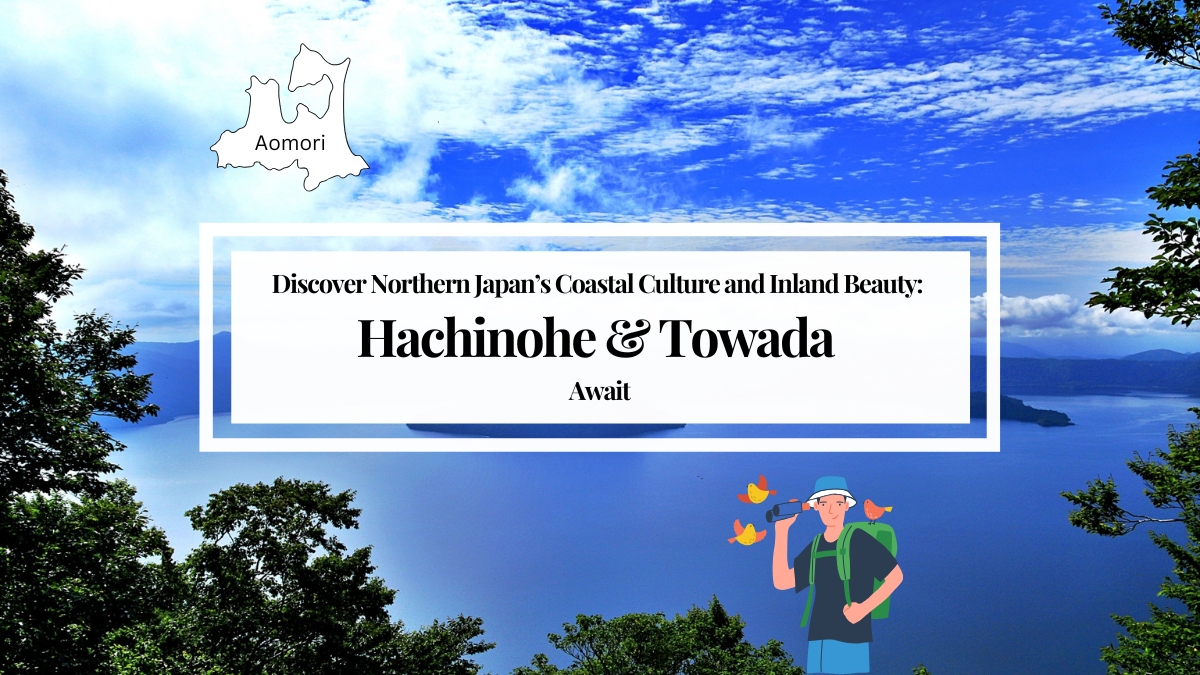For travelers seeking an unforgettable journey off the beaten path, Aomori Prefecture offers a perfect pairing: the lively coastal city of Hachinohe and the art- and nature-rich inland town of Towada. In Hachinohe, immerse yourself in local traditions, from bustling morning markets and flavorful yokocho alleys to spiritual shrines and stunning seaside views along the Tanesashi Coast. Just inland, Towada invites you to slow down amid serene lake landscapes, forested gorges, and contemporary art installations that blend seamlessly with nature. Whether you’re savoring fresh seafood by the Pacific or hiking through national parks adorned with waterfalls and legends, this journey through northern Japan offers a unique fusion of culture, creativity, and scenic wonder.
Experience the Charm of Hachinohe, Aomori

Located on the Pacific coast of Aomori Prefecture, Hachinohe offers a perfect mix of coastal beauty, rich tradition, and authentic local culture. From scenic spots like Tanesashi Coast and Kabushima Shrine to lively markets such as Hasshoku Center and Tatehana Wharf Morning Market, the city is full of unique experiences. Whether you’re exploring historic shrines, enjoying fresh seafood, or wandering through lantern-lit yokocho alleyways, Hachinohe is a hidden gem waiting to be discovered.
The area around Hachinohe Station
The area around Hachinohe Station in Aomori Prefecture is a perfect starting point for your journey through northern Japan. Directly connected to the station via a walkway is Youtree, a cultural and tourism hub that warmly welcomes first-time visitors. On the first floor, you’ll be greeted by an impressive float from the Hachinohe Sansha Taisai, a summer festival held annually from July 31 to August 4 and designated as an Important Intangible Folk Cultural Property of Japan. Remarkably, you can view this magnificent float year-round. The same floor also features a gift shop offering around 2,000 local specialty items from the Hachinohe region and beyond, including live demonstrations of Nanbu senbei (a traditional rice cracker). You can even enjoy a tasting of local sake for just 100 yen. On the second floor, visitors will find a restaurant and craft demonstration areas showcasing traditional Nanbu sakiori (woven textiles) and Nanbu hishizashi (embroidery), with hands-on experiences available by reservation.
Hasshoku Center 八食センター
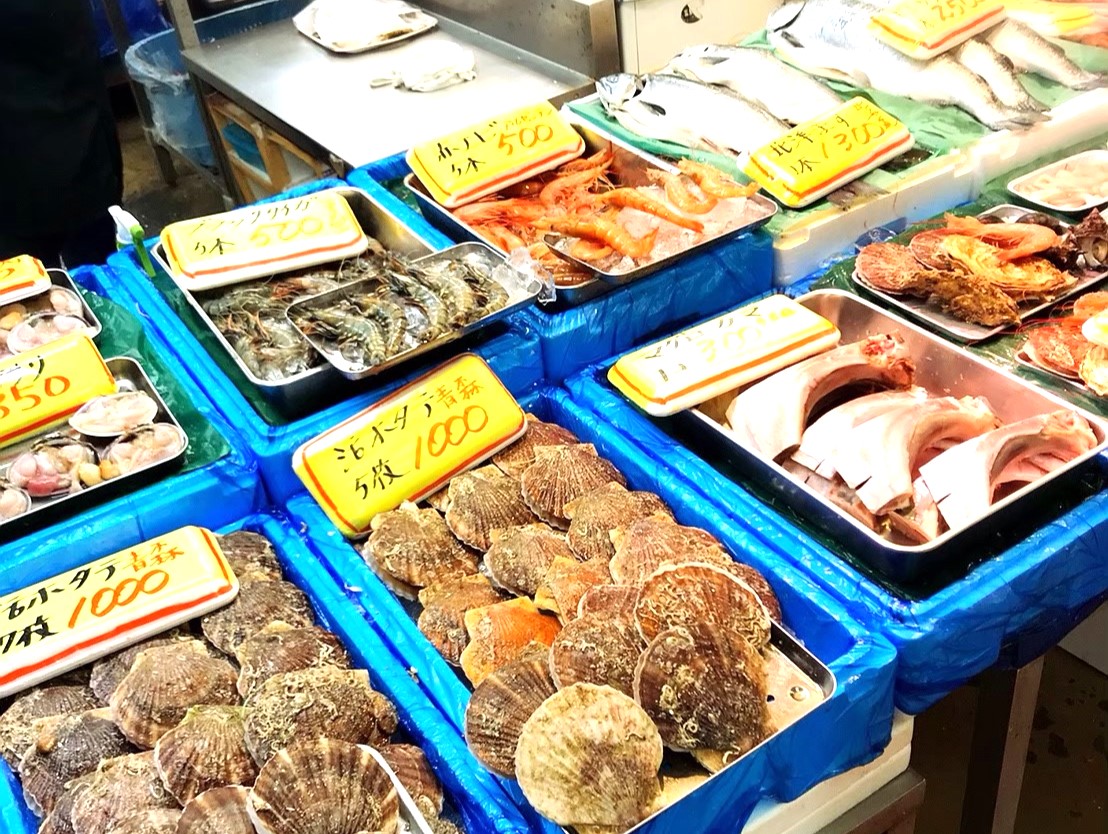
Hasshoku Center is a must-visit destination for food lovers exploring Hachinohe. Known as the city’s “kitchen,” this massive marketplace features around 60 shops lined along a 170-meter-long corridor, offering everything from freshly caught seafood from Hachinohe Port to local produce, mountain delicacies, and regional specialties. Inside, you’ll find two dining zones—Kuriya Stadium and Aji Yokocho—where you can savor ready-to-eat meals. One of the highlights is Shichirin Mura, a grilling area where you can cook seafood and other ingredients purchased at the market over a traditional charcoal grill. The center is also home to a conveyor belt sushi restaurant that prides itself on serving ultra-fresh sushi made from locally sourced catches, including specialties like the “Three Kinds of Squid,” “Three Kinds of Mackerel,” and “Three Types of Seared Fish” sets. To get there, hop on the Hasshoku 100-yen bus or the Hasshoku “Ika” (under 200 yen) bus from Hachinohe Station and get off at “Hasshoku Center.”
Hachinohe Art Museum 八戸市美術館
The Hachinohe Art Museum, originally opened in 1986, was completely rebuilt and reopened in 2021 after a period of closure due to aging facilities. Located just a 10-minute walk from JR Hon-Hachinohe Station, the new museum showcases modern architectural design by Tetsuo Nishizawa, Yoshihide Asako, and Junpei Mori. As you step inside, you’re welcomed by the impressive “Giant Room,” a vast 800-square-meter space with soaring 18-meter ceilings. Designed as a flexible, open hub, this area connects the various exhibition rooms and can also be used freely for meetings, casual gatherings, or even a quick coffee break. Whether you’re visiting for an exhibition or simply looking to relax in a creative space, the museum invites everyone to drop by and enjoy its vibrant atmosphere.
Tanesashi Coast 種差海岸
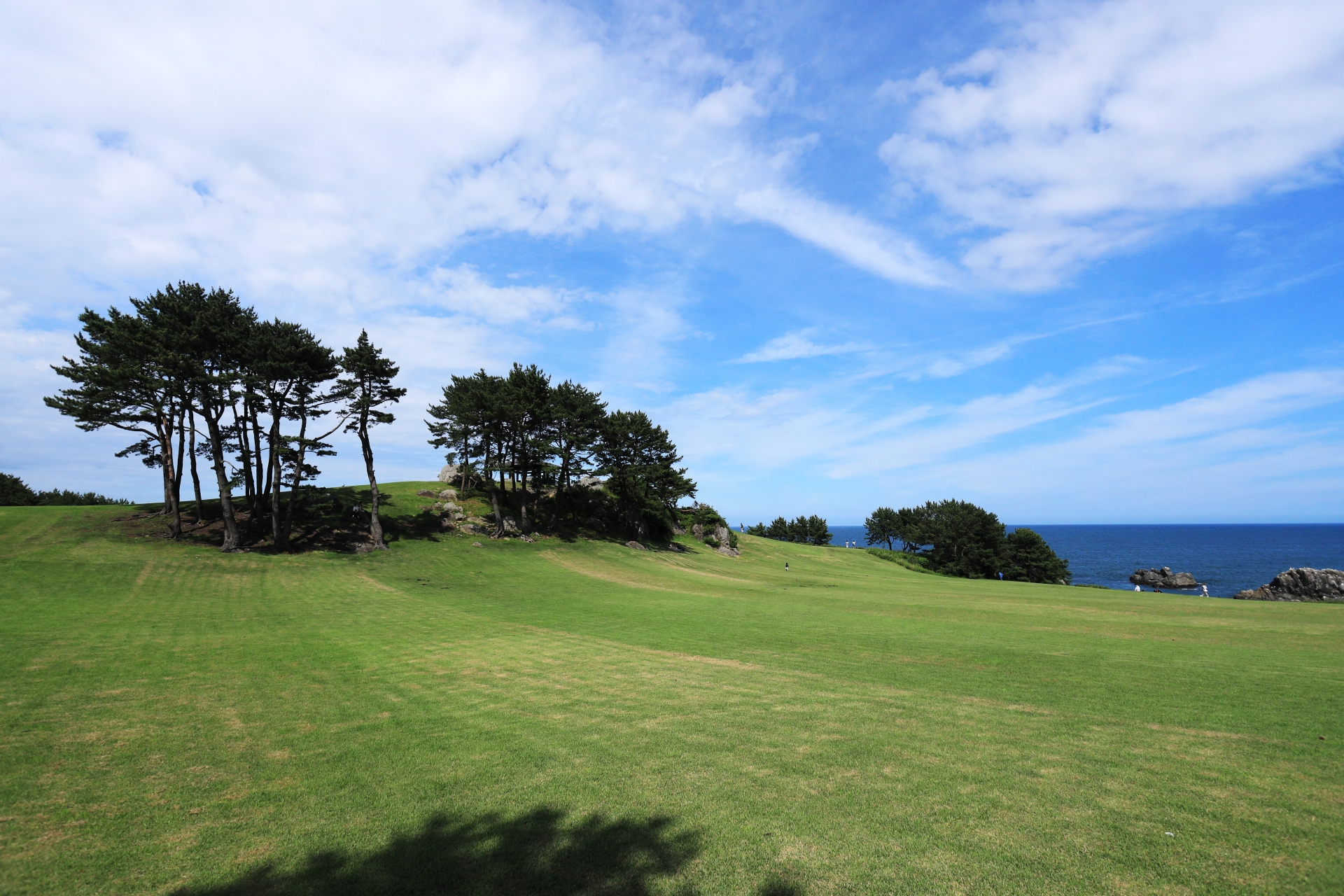
Tanesashi Coast, located within the Sanriku Fukko National Park and designated as a National Place of Scenic Beauty, offers one of Japan’s most unique natural landscapes. Home to over 650 species of wild plants, the area is especially breathtaking from May to October when flowers bloom in abundance. Strolling along the seaside walking trails reveals a stunning tapestry of colorful blossoms, lush natural grasslands that reach the ocean’s edge, dramatic rock formations, centuries-old pine groves, and flocks of charming black-tailed gulls.
The coastline is divided into four scenic zones. At the northernmost point lies the Kabushima Area, where thousands of gulls arrive between March and August to nest and raise their young. Locals have long revered these birds as messengers of Benzaiten, the deity enshrined at Kabushima Shrine.
Heading south, the Ashigezaki Observatory and Osuga Coast Area features highlights like the striking white Samekado Lighthouse, the castle-like Ashigezaki Observatory, and the flower-rich rock coast of Nakasuga, which blooms with vibrant colors from mid-June to mid-July. Don’t miss the Osuga Beach with its unique “singing sand” that squeaks underfoot.
In the central Tanesashi Natural Lawn Area, visitors can explore the Yodo-no-Matsubara pine grove, the iconic white rocks known as Shiraiwa, and the expansive natural grassland of Tanesashi itself—a rare sight where green turf stretches all the way to the shoreline, creating a striking blue-and-green seascape.
At the southernmost Okuki Area, you’ll find traditional thatched-roof fishing huts that evoke the life of old-time fishermen, as well as Itsukushima Shrine (Bentenjima), which gained international attention when part of its torii gate washed ashore in California after the 2011 tsunami and was later returned and restored.
To make your visit easy and enjoyable, hop on the Umineko-go (Black-tailed Gull Bus), a convenient one-coin shuttle that lets you explore the coast with ease.
Ashigezaki Observatory 葦毛崎展望台
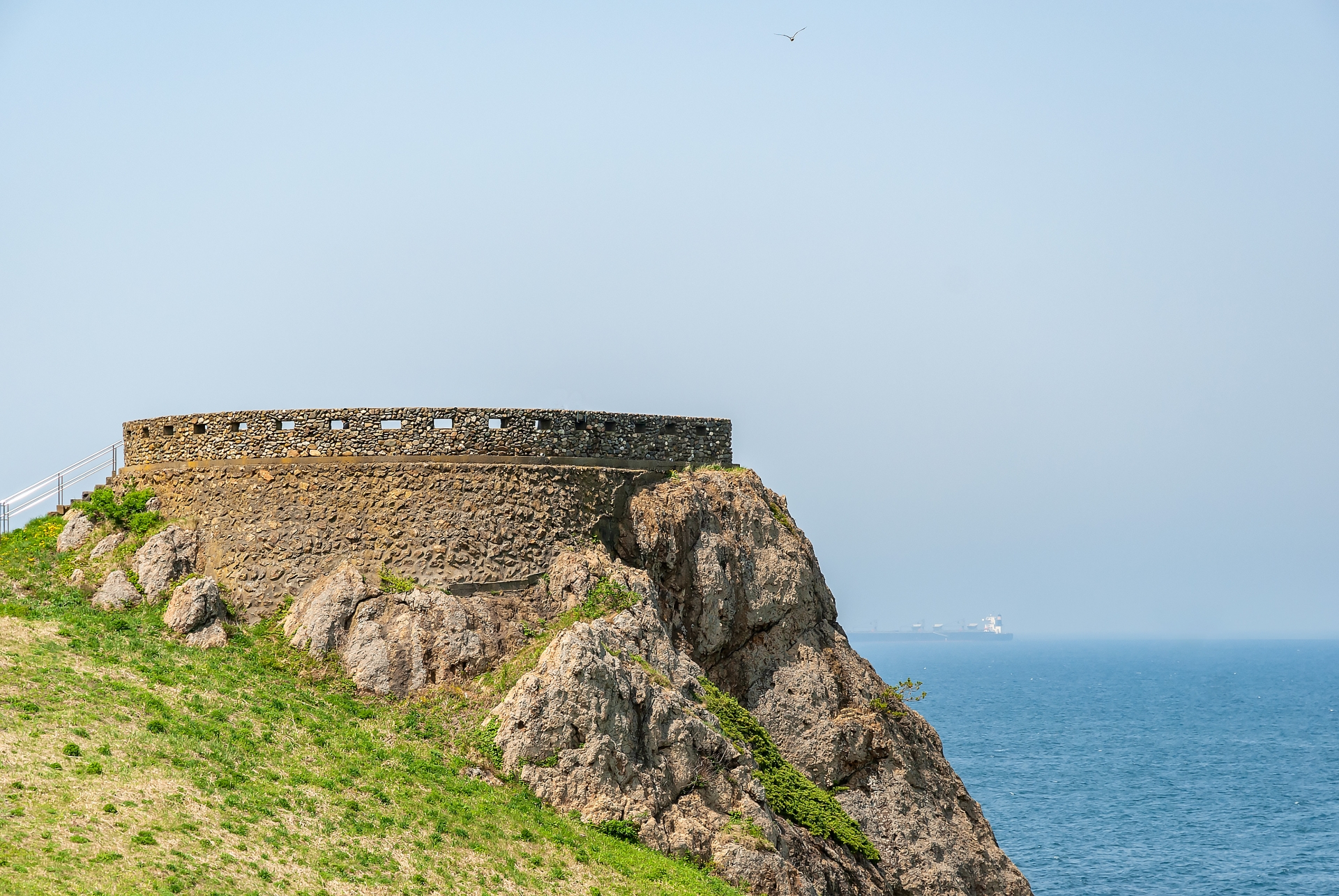
Ashigezaki Observatory is a scenic viewpoint perched on a cape in front of the Samekado Lighthouse, offering breathtaking panoramic views of the Pacific Ocean. Once used as a military facility by the former Japanese army during the final years of World War II, the site is now open to the public and has become a beloved spot for sightseeing and photography. It also marks the starting point of the Tanesashi Coast walking trail, where visitors can enjoy a peaceful stroll surrounded by seasonal flowers such as hamanasu (rugosa roses). Don’t forget to stop by the nearby shop at the foot of the observatory, where their soft-serve ice cream is a local favorite!
Kabushima & Kabushima Shrine 蕪島
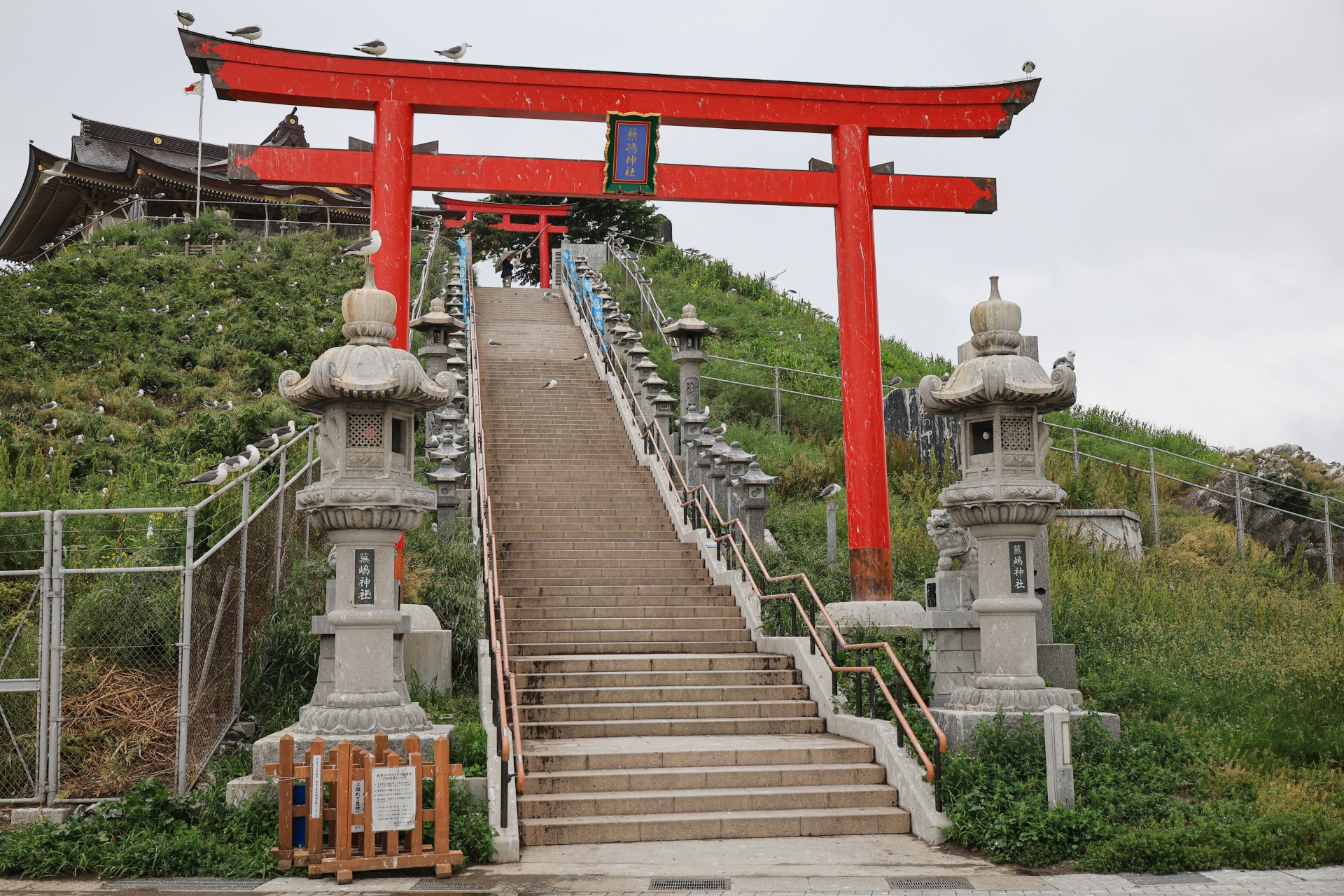
Located at the northern tip of the Tanesashi Coast, Kabushima is a rare and remarkable place—designated a National Natural Monument and known as the only location in Japan where visitors can closely observe the nesting of black-tailed gulls (umineko). Every year from early March to August, thousands of these seabirds arrive, lay eggs in April, hatch their chicks in June, and depart by late summer. Originally a separate island, Kabushima was connected to the mainland via land reclamation in 1942, making it easily accessible on foot.
At the island’s summit sits Kabushima Shrine, a place of worship dedicated to wishes for business prosperity and maritime safety. Though tragically destroyed by fire in 2015, the shrine was lovingly rebuilt thanks to donations from across the country and reopened for public worship in 2020, coinciding with its grand festival.
Kabushima also marks the starting point of the Michinoku Coastal Trail, a 1,000+ km long hiking route that stretches from here all the way to Matsukawaura in Soma, Fukushima. Celebrated as a symbol of recovery after the 2011 Great East Japan Earthquake, the trail connects travelers with the rich natural and cultural beauty of Tohoku.
Tatehana Wharf Morning Market 館鼻岸壁朝市
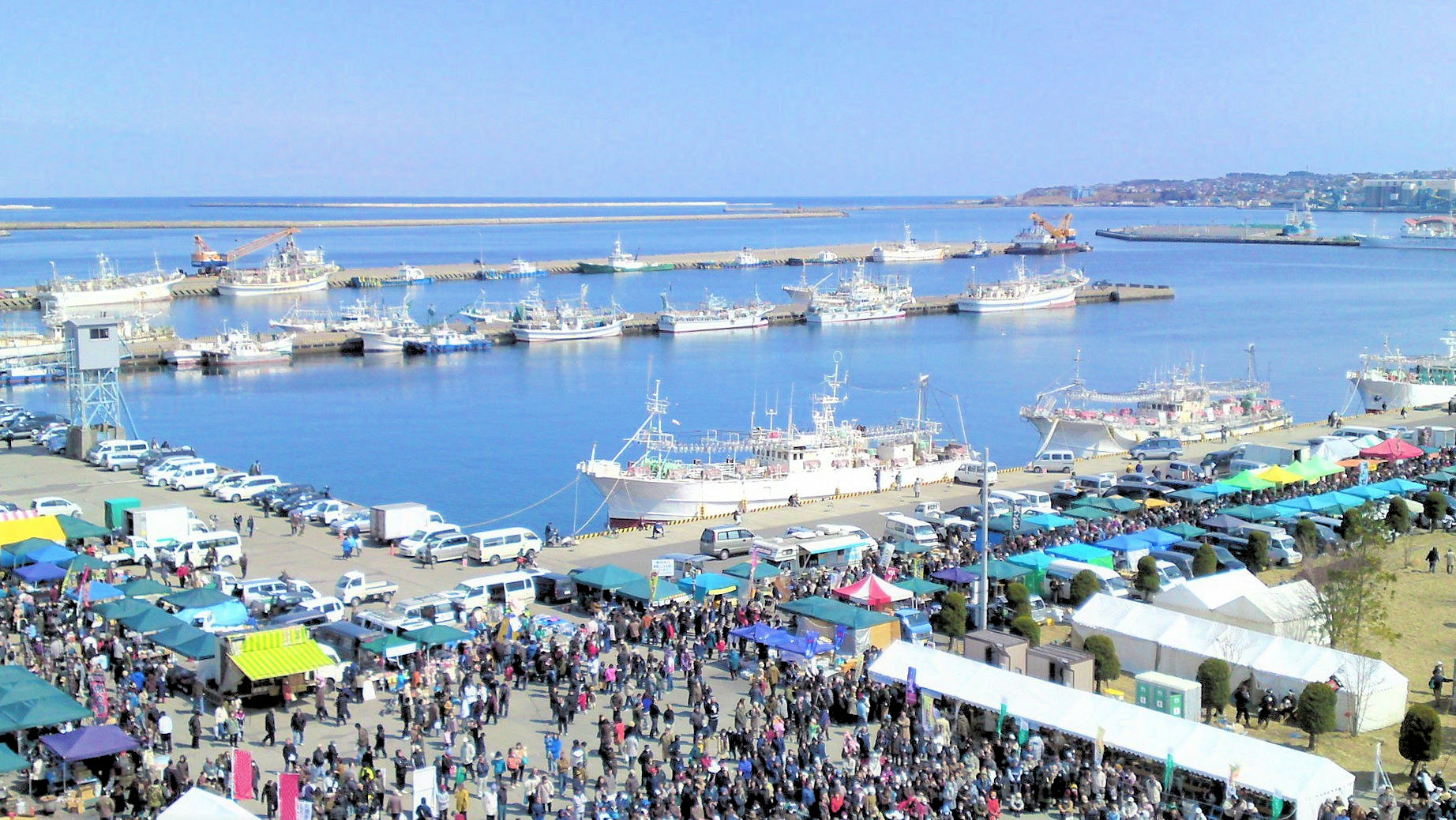
Just a short distance away, the Tatehana Wharf Morning Market is one of Japan’s largest, stretching 800 meters along the coast with over 300 vibrant stalls. Originally held near Mutsu Minato Station, the market moved to its current seaside location in the early 2000s. Open every Sunday from mid-March through December (with occasional holiday openings), the market offers everything from fresh seafood and local produce to handmade sweets, hot meals, flowers, and crafts. It opens at sunrise and winds down around 9 a.m.—some vendors even start setting up as early as 2 a.m.It’s a perfect place to enjoy early morning shopping and street food with a lively, local atmosphere.
Kushihiki Hachimangu Shrine 櫛引八幡宮
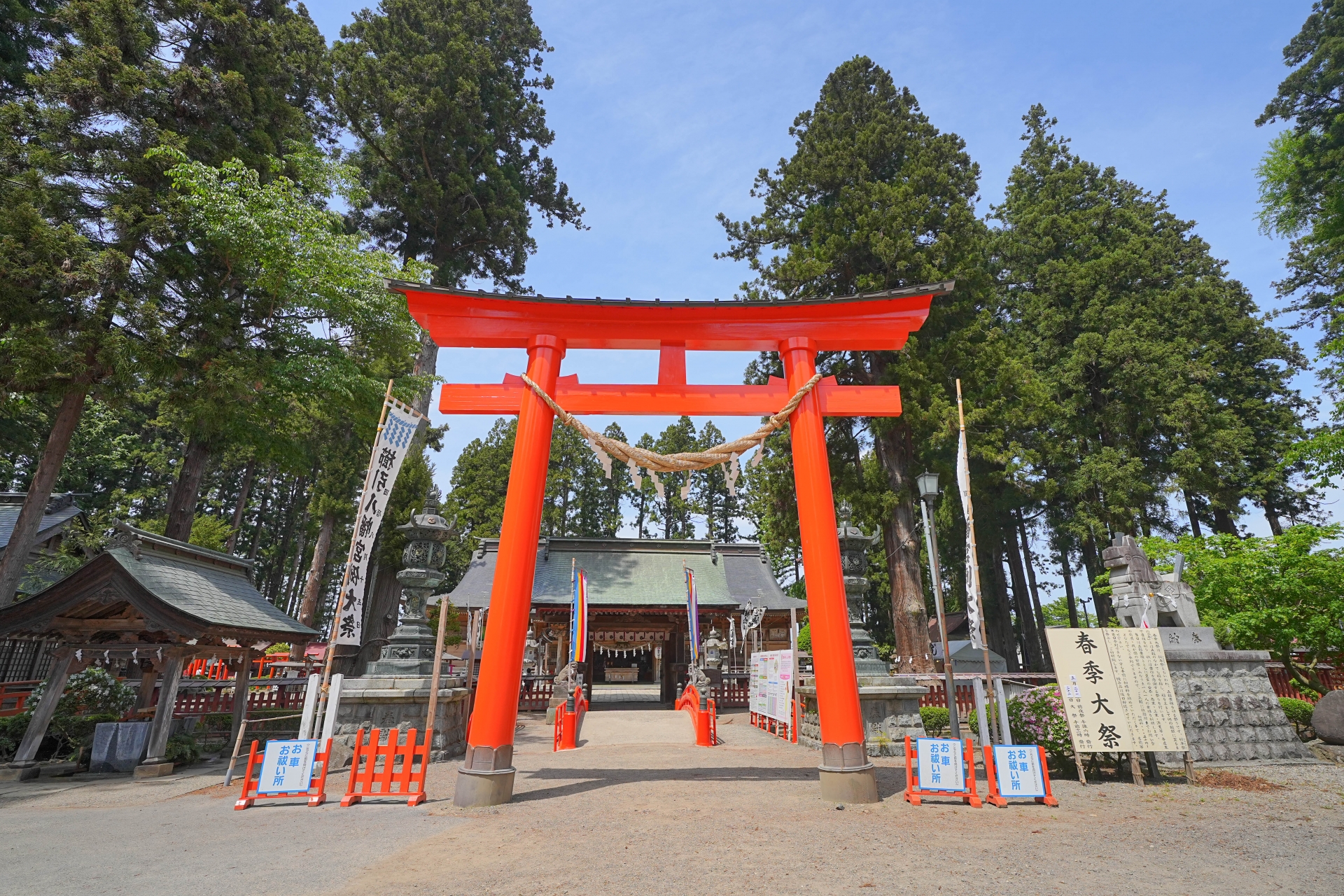
With a history spanning over 800 years, Kushihiki Hachimangu is the spiritual heart of the former Nanbu domain and one of the most revered shrines in Aomori Prefecture. Originally established in 1222 by Nanbu Mitsuyuki—who received the Nukanobu district as a reward for his role in defeating the Oshu Fujiwara clan—the shrine enshrines the Hachiman deity, brought from Kai Province. As the primary shrine (Ichinomiya) of the Nanbu clan, it has long been a center of regional faith and tradition.
Surrounded by centuries-old cedar trees, the shrine grounds offer a serene and solemn atmosphere. The honden (main sanctuary), built in the early Edo period, is a rare architectural relic designated as an Important Cultural Property of Japan. Within the precinct stands the Kokuhokan (National Treasure Hall), which houses two of Japan’s most prized samurai armors: the Red-Laced Armor (Akaito Odoshi Yoroi) and the White-Laced Armor with Trimmed Hem (Shiroito Odoshi Tsumadori Yoroi)—both designated as National Treasures. These exceptional examples of craftsmanship once belonged to the lords of the Nanbu clan.
Also located within the shrine grounds is the Meiji Memorial Hall, a Western-style wooden building originally constructed in 1882 as Hachinohe Elementary School’s lecture hall. It served as a temporary lodging for Emperor Meiji during his imperial tour of the Tohoku region and is now recognized as the oldest surviving Western-style building in Aomori Prefecture.
Kushihiki Hachimangu is not only a site of deep historical and cultural value but also a peaceful escape into the spiritual and artistic legacy of Japan’s samurai past.
Hachinohe City Fisheries Science Museum Marient 八戸市水産科学館マリエント

The Hachinohe City Fisheries Science Museum Marient is a family-friendly attraction that showcases the wonders of the ocean through the lens of Hachinohe—one of Japan’s leading fishing ports. This interactive marine science center offers a fun and educational experience for visitors of all ages. Highlights include a large aquarium filled with swimming fish, a touch tank where you can interact with sea creatures, and the unique “Umineko Theater” featuring black-tailed gulls, a beloved symbol of the region.
Visitors can also enjoy a variety of hands-on experiences, such as watching divers (Marine Rangers) feed the fish, observing electric eel demonstrations, and trying their hand at feeding the fish themselves. Whether you’re a marine life enthusiast or traveling with kids, Marient is a great place to explore the charm of the sea and learn about the local fishing culture of Hachinohe.
Tsukahara Museum ツカハラミュージアム
The Tsukahara Museum is a one-of-a-kind automotive museum that brings together a stunning collection of classic cars from around the world—each with a story, a legacy, and timeless beauty. Visitors can witness the meticulous restoration process up close, where every bolt and part is handled with exceptional care and precision. The museum also features unique exhibits, including the rare opportunity to sit in the cockpit of a prototype Formula Nippon race car once considered a dream machine. Whether you’re a car enthusiast, a curious child, or simply intrigued by design and engineering, the Tsukahara Museum offers a fascinating journey into the world of legendary automobiles.
Lake Aoba 青葉湖
Lake Aoba is a serene dam lake created by the construction of the Yomasari Dam. It was named after the legend of the “Flute of Aoba,” said to have been brought to this area by Taira no Shigemori when he fled here after his counsel was rejected by his father, the powerful Taira no Kiyomori. The lake is especially known for its seasonal beauty—its scenic views from the lakeside observation decks are captivating year-round, with the vibrant autumn foliage being a particular highlight.
Downstream from the dam, visitors can explore the preserved site of the former Shimamori Power Plant, which served the region for 85 years before being retired due to the dam’s construction. Now part of a peaceful park, the area offers a chance to observe wildflowers like katakuri (dogtooth violet) in full bloom during May, making it a charming spot for nature walks and historical reflection.
Chōjasan Shinra Shrine 長者山新羅神社
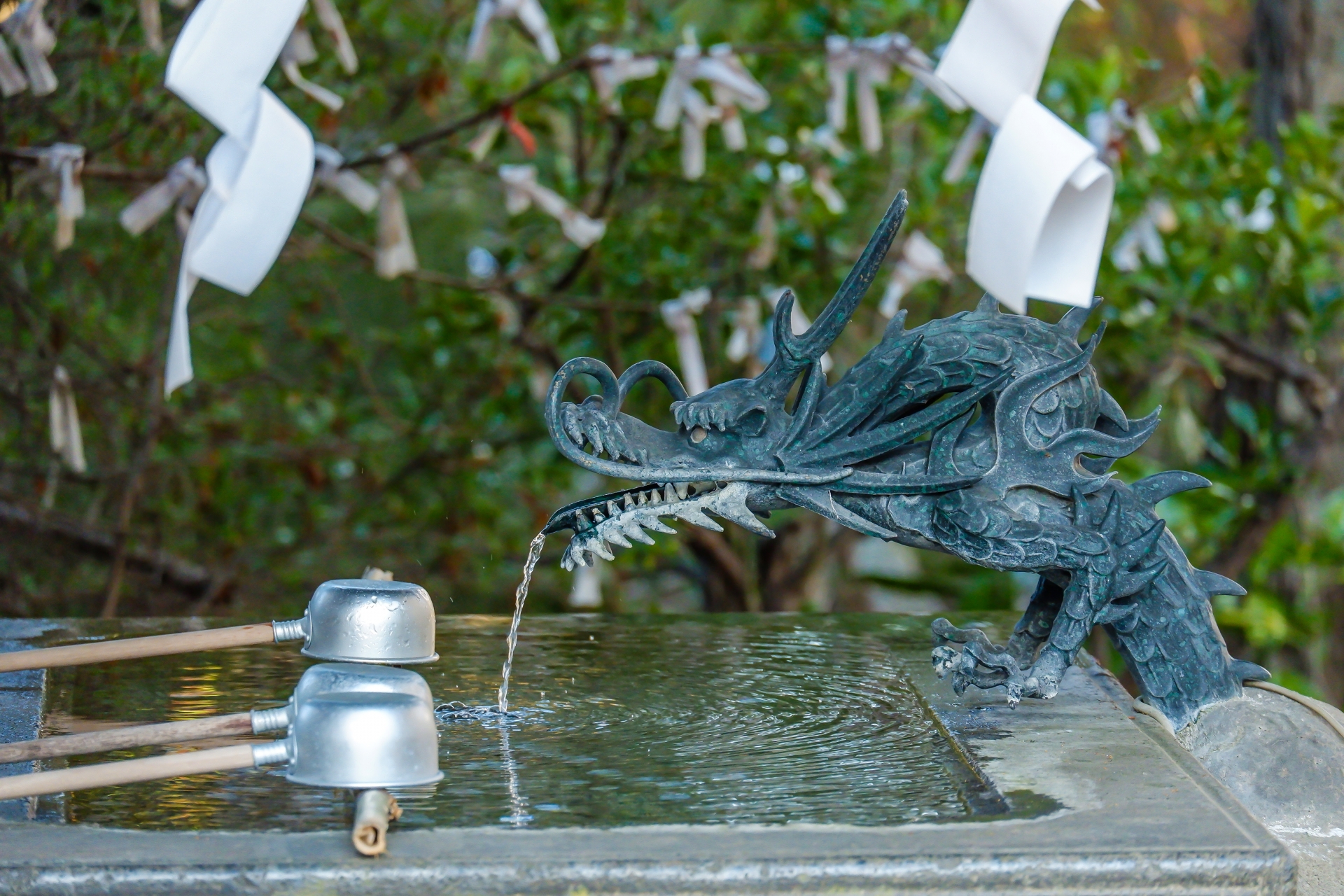
Chōjasan Shinra Shrine is a historic Shinto shrine founded in 1678 by Nanbu Naomasa, the second lord of the Hachinohe Domain, who built it to pray for the protection of his territory. The shrine’s main hall (honden) and worship hall (haiden) feature intricate wood carvings that beautifully reflect the architectural style of the Edo period, earning them recognition as Important Cultural Properties of Aomori Prefecture.
The shrine plays a central role in Hachinohe’s rich cultural traditions. Every year on February 17, it hosts a dedication performance of Hachinohe Enburi, a local winter folk dance meant to pray for a bountiful harvest. During the city’s major summer event, the Hachinohe Sansha Taisai (Three-Shrine Festival) in August, a grand procession of portable shrines (mikoshi) departs from Ogami Shrine and makes its way to Chōjasan Shinra Shrine. On August 2, visitors can witness the rare and dynamic Kagami-ryu Kiba-Dakyu, a horseback polo ritual preserved in only three locations across Japan—making this shrine a truly special destination for those interested in history, tradition, and sacred pageantry.
Hachinohe Portal Museum “Hacchi” 八戸ポータルミュージアム はっち
Located in the heart of Hachinohe’s downtown area, Hacchi serves as a vibrant cultural and tourism hub for the city. Opened in 2011, this striking landmark welcomes visitors with a display of Yawatama—a traditional wooden horse that represents Hachinohe’s rich folk craft heritage.
Inside, Hacchi offers a dynamic mix of spaces, including a café, museum shop, galleries, studios, and theaters where artists and locals engage in creative activities. There’s also a play area for children, making it a welcoming spot for families. On the first floor, don’t miss the mechanical Kagura Clock inspired by the sacred Hōrei Kagura dance—it comes to life with a dramatic drum performance at the top of every hour.
The Kaneiri Museum Shop, also on the first floor, is a perfect place to pick up well-designed local items, including Yawatama horses, Nanbu sakiori woven goods, Hachinohe ceramics, and other beautifully crafted souvenirs. Whether you’re exploring local culture or looking for a place to relax, Hacchi is a must-visit stop that connects tradition, creativity, and community.
Hachinohe Yokocho Alleys 八戸横町

Hachinohe’s downtown is home to a lively and nostalgic yokocho (alleyway) culture, where eight unique alleys—such as Miroku Yokocho, Hanakoji, Rōcho Rensa-gai, Nagayokocho Rensa-gai, Tanuki Koji, Gobangai, Harmonica Yokocho, and Showa-dori—create a charming maze of local flavor and hospitality. These narrow streets are packed with a delightful mix of establishments: long-standing bars and snack pubs, cozy izakaya, ethnic restaurants, and even ramen shops that open only at night.
Each alley has its own atmosphere, and together they offer an authentic taste of Hachinohe’s nightlife. Whether you’re in the mood for traditional Japanese dishes, craft drinks, or simply want to chat with friendly locals, these yokocho alleys are perfect for bar-hopping and experiencing the city’s vibrant culinary soul.
Shirahama Beach 白浜海水浴場
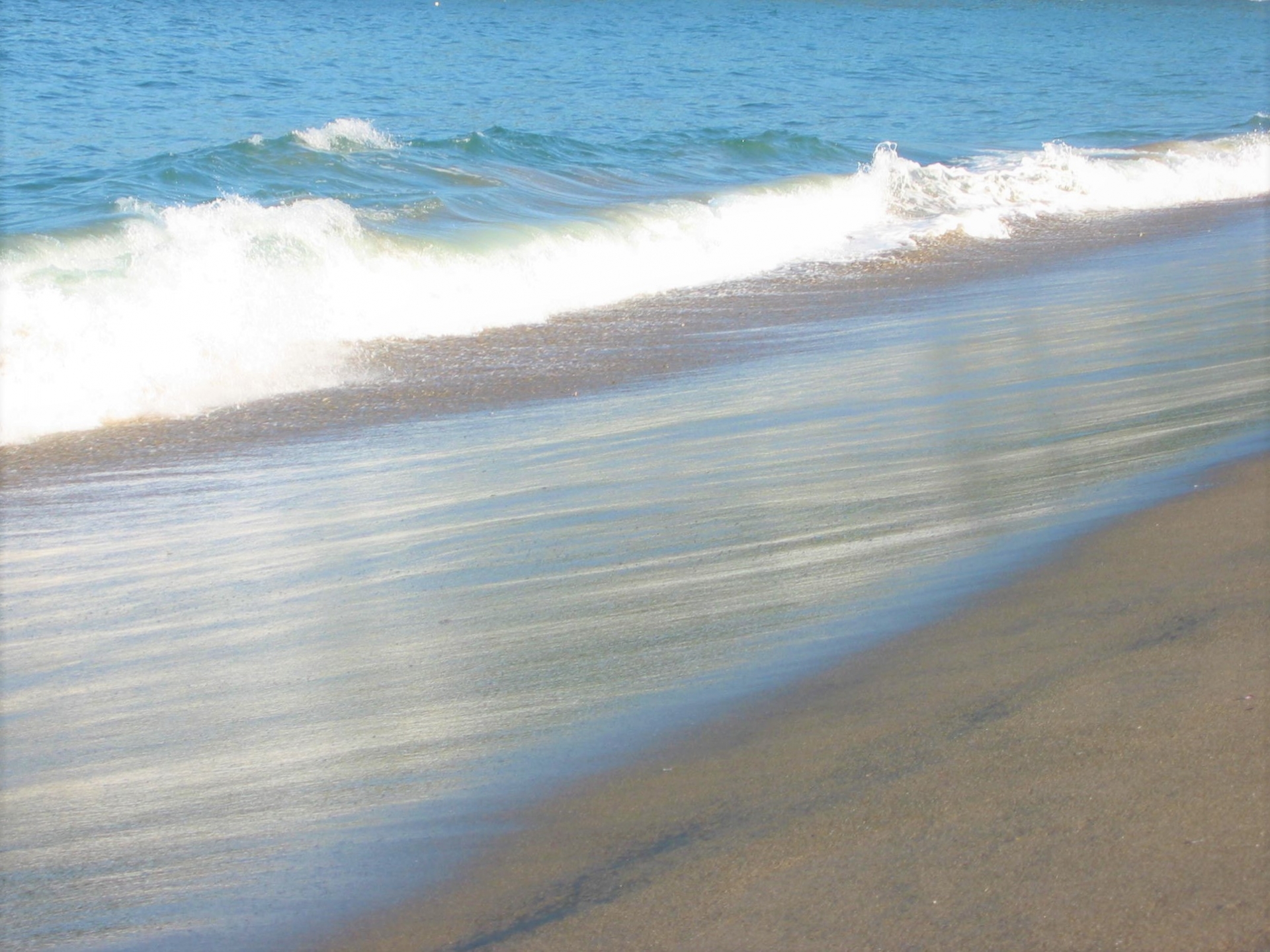
Shirahama Beach is Hachinohe’s largest and most popular seaside destination, known for its wide stretch of beautiful white sand and gentle waves. During the summer swimming season—from mid-July to late August—the beach comes alive with families, friends, and sunseekers. Facilities such as showers, changing rooms, and beach huts are available, making it a comfortable and convenient spot for a day by the sea.
In 2006, Shirahama Beach was selected as one of the “Top 100 Swimming Beaches” by Japan’s Ministry of the Environment, thanks to its cleanliness, scenic beauty, and excellent amenities. Whether you’re swimming, sunbathing, or just enjoying the ocean breeze, Shirahama offers a perfect coastal escape in northern Japan.
Discover the Artistic and Natural Wonders of Towada, Aomori
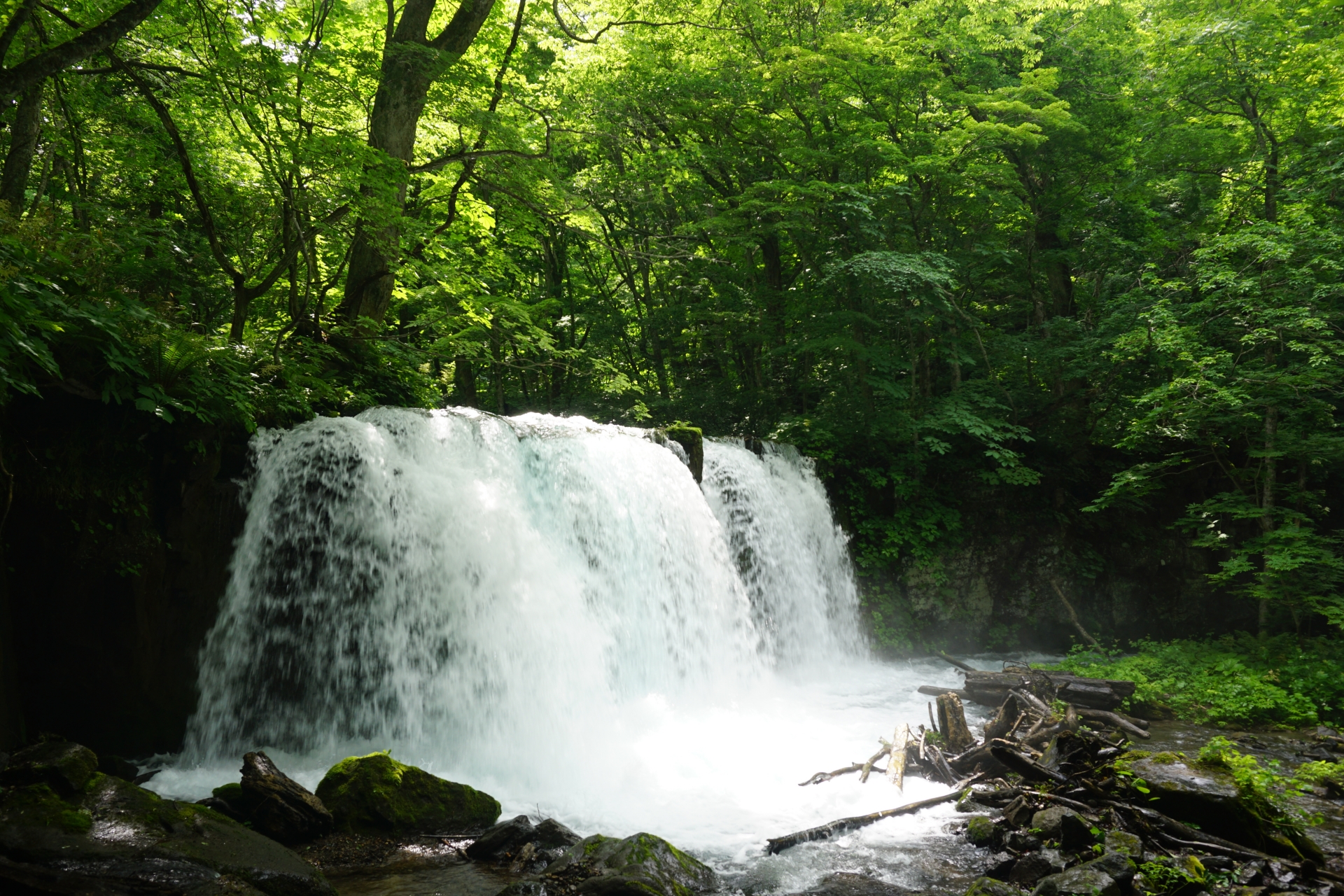
Nestled in the heart of northern Japan, Towada in Aomori Prefecture offers a perfect blend of breathtaking nature, vibrant local culture, and world-class contemporary art. From the mystical blue waters of Lake Towada and the lush trails of Oirase Gorge to the innovative installations at the Towada Art Center, this city invites travelers to experience Japan beyond the ordinary. Whether you’re seeking scenic hikes, hot springs, local flavors, or inspiring art encounters, Towada promises an unforgettable journey through the rich landscapes and creative spirit of Tohoku.
Towada-Hachimantai National Park 十和田八幡平国立公園
Towada-Hachimantai National Park, located in the mountainous northern region of Japan’s main island, is a haven of serene lakes, ancient forests, and volcanic landscapes. The park consists of two distinct areas: the Towada-Hakkoda region, home to the mystical Lake Towada, the crystal-clear Oirase Gorge, and the snow-covered Hakkoda Mountains; and the Hachimantai region, known for its volcanic terrain, alpine wetlands, and breathtaking mountain views. Visitors can enjoy ever-changing scenery throughout the four seasons, from vibrant autumn foliage to surreal winter snow monsters. The park is also rich in wildlife and flora, offering nature lovers a true retreat. Adding to its charm, the area is dotted with historic hot spring resorts, making it an ideal destination for both exploration and relaxation.
Lake Towada 十和田湖

Straddling the border of Akita and Aomori Prefectures, Lake Towada is a stunning caldera lake known for its deep blue waters and abundant natural beauty. As the source of the famous Oirase Gorge, the lake plays a vital role in the region’s ecosystem. Once revered as a sacred site, it is also steeped in legend, including the tale of the warrior monk Nansobō. Today, Lake Towada offers visitors a variety of outdoor activities and seasonal events, making it a perfect destination for nature lovers and adventure seekers alike.
JA Towada Oirase Farmers Market “Kadā~re ” JA十和田おいらせ ファーマーズ・マーケット かだぁ~れ
Opened in October 2020 in Sannbonki, Towada City, Kadā~re is one of the largest farmers markets in the Tohoku region. This vibrant marketplace offers a wide variety of fresh, locally sourced products, including just-picked vegetables from local growers, seasonal flowers and seedlings, JA-branded meats and produce, freshly baked bread, and even seafood. With many items exclusive to this market, it’s a must-visit spot for travelers looking to experience the authentic flavors and agricultural richness of the Towada-Oirase region.
Ohanabe-yama Observatory (Lake Towada) 御鼻部山展望台(十和田湖)
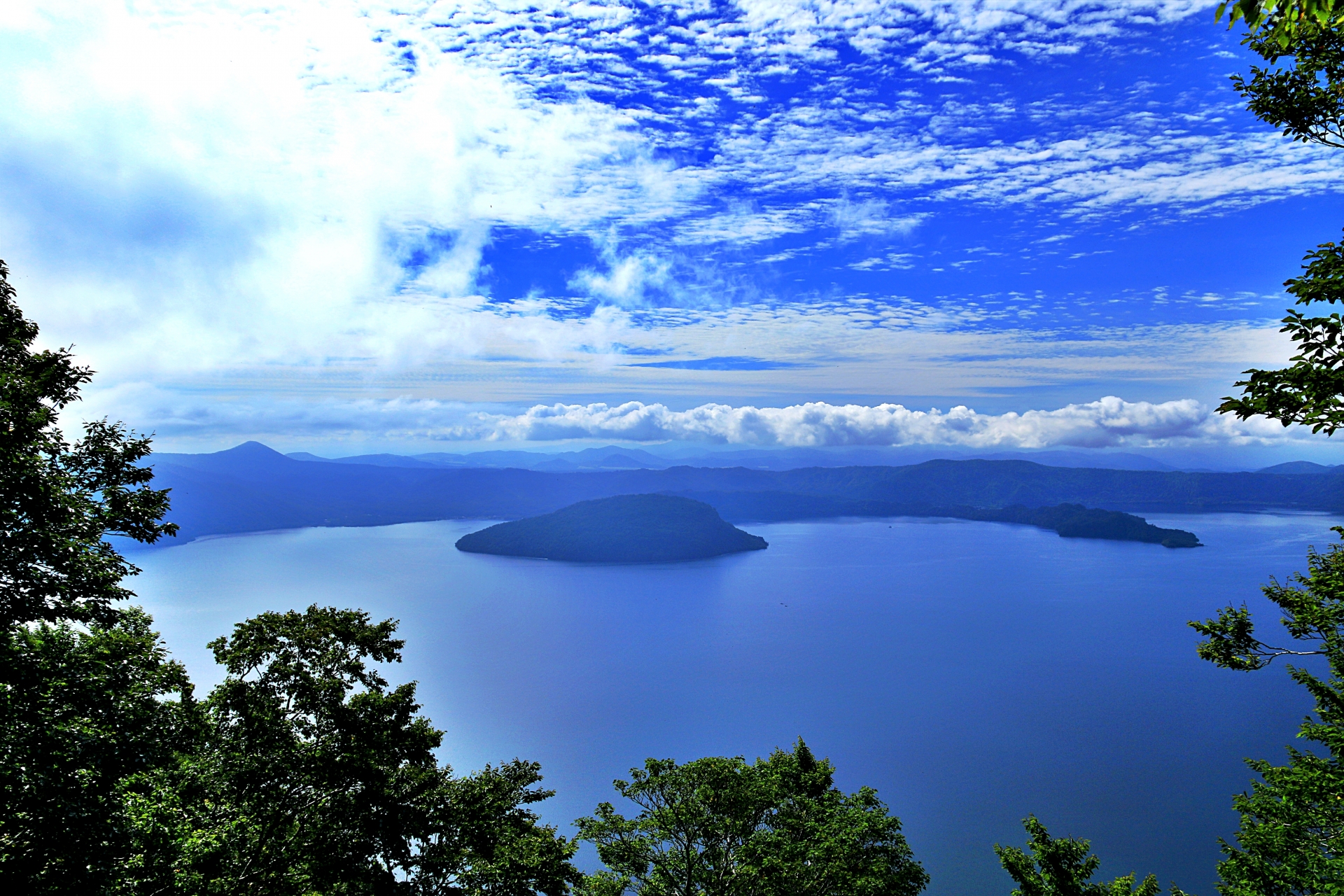
Located along Route 102 from Kosanoro toward Hirosaki, the Ohanabe-yama Observatory sits atop a winding mountain pass known as Nanamagari. From this scenic viewpoint, visitors are treated to a breathtaking, panoramic view of Lake Towada, where the Okura and Nakayama peninsulas extend into the deep blue waters, creating a mystical and serene landscape. On clear days, the distant peaks of Mt. Iwate and the Hachimantai skyline can also be seen, making this a perfect spot for photography and nature appreciation.
Towada Shrine 十和田神社
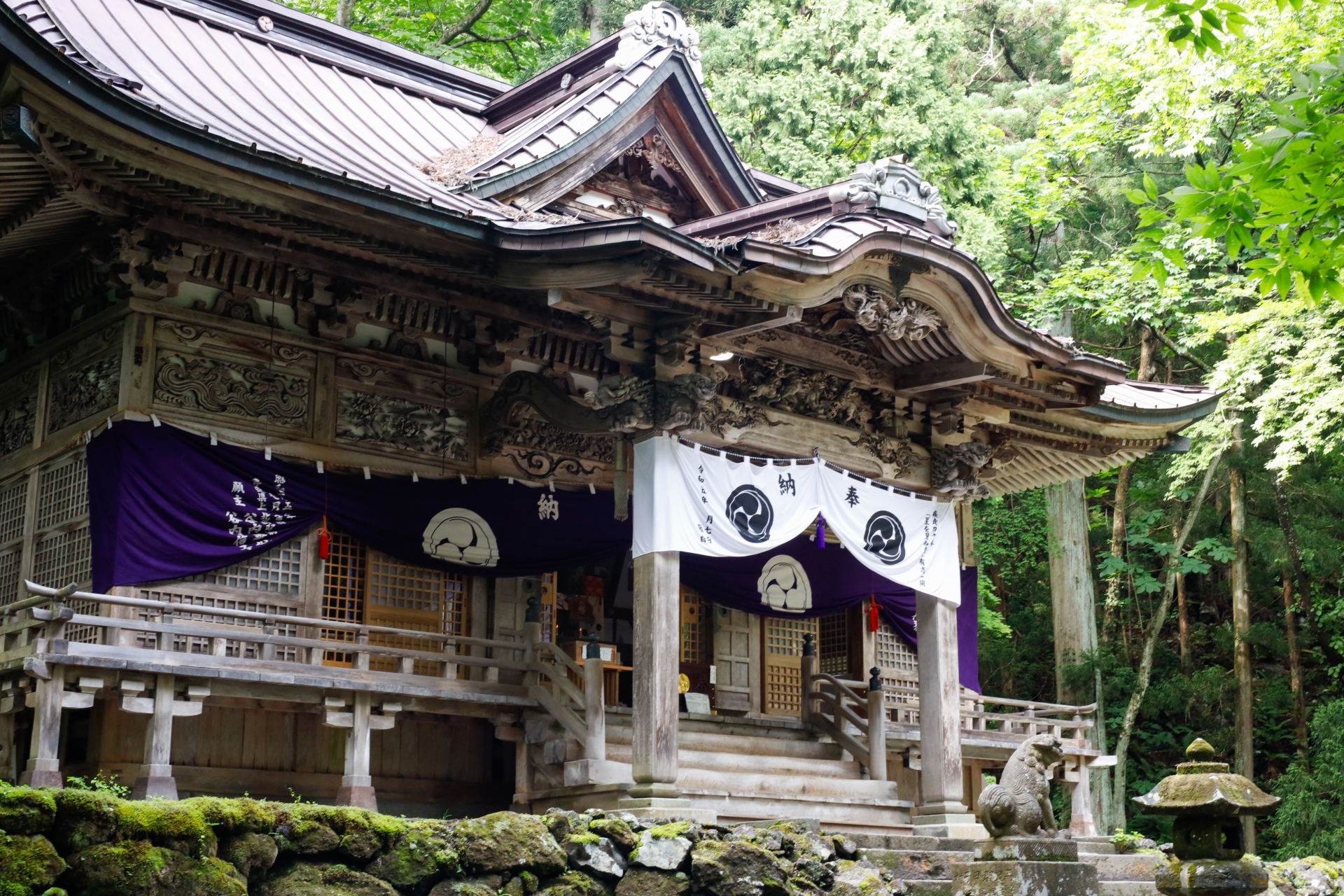
Nestled in the serene forest near Lake Towada’s Yasumiya area, Towada Shrine is a mystical site steeped in legend and spiritual energy. The shrine can be reached via a path known as the “Path of Good Fortune,” which branches off the trail leading to the iconic Maiden Statue. As visitors approach, they pass through towering cedar trees and encounter a dragon-shaped water basin, marking the sacred entrance. Dedicated to the legendary warrior Yamato Takeru, the shrine reflects Japan’s deep-rooted traditions in both Shinto and ancient water deity worship.
Historically, Towada Shrine was also revered as a center of worship for the Blue Dragon Deity (Seiryū Gongen), and remnants of this faith remain today. Two origin legends surround the shrine—one attributes its founding to General Sakanoue no Tamuramaro in 807, while another tells of the wandering ascetic Nansobō, who, after receiving divine guidance in Kumano, defeated the lake’s monstrous serpent Hachirōtarō by transforming into a nine-headed dragon.
The shrine is also known for its sacred Uranai-ba (Divination Site), once located deep in the forest. In this unique ritual, visitors would toss blessed paper offerings into the lake—if the paper sank, the wish was granted; if it floated away, the wish would not come true. Although the original divination site is now closed for safety, visitors can still partake in the ritual by casting their offerings into the waters of nearby Ozenuma Beach or even in symbolic water at home. Towada Shrine continues to be a place where myth and mystery intertwine, inviting travelers into a world of spiritual reflection.
Towada Art Center 十和田市現代美術館
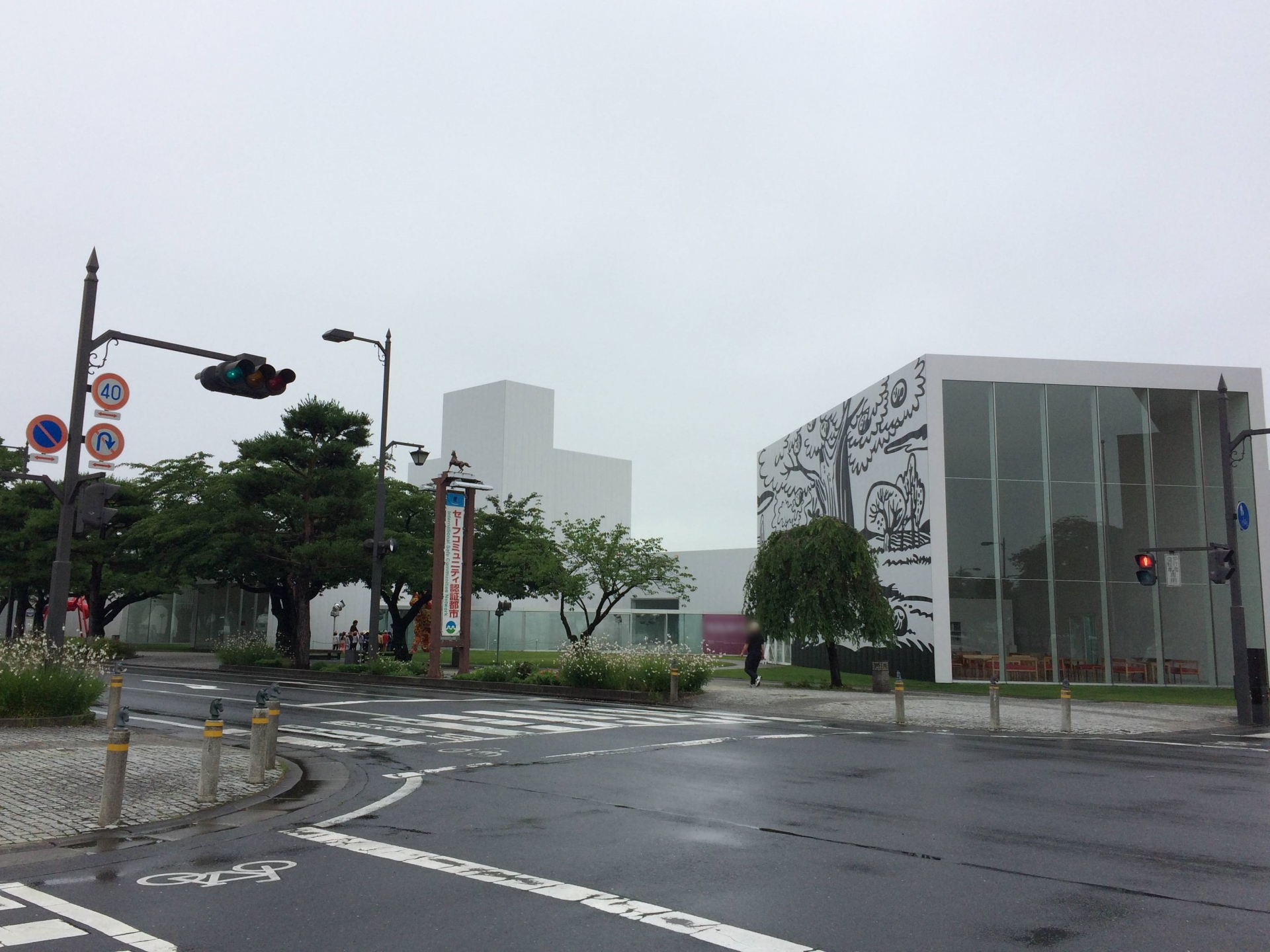
The Towada Art Center is the centerpiece of the Arts Towada project, an innovative urban initiative that transforms the city’s central government district street—Kanchogai Street—into an open-air museum. Along this symbolic road, visitors will find playful public art installations and interactive street furniture, such as sculpture-benches that blend seamlessly into everyday life, making art an accessible part of the city’s rhythm.
Designed to be open and integrated with the surrounding town, the museum features large glass windows that visually connect the indoor galleries with the outside world. Artworks are not limited to traditional exhibition rooms; they extend to the courtyard, rooftop, and even stairwells, inviting exploration and discovery at every turn. The permanent collection includes iconic pieces by internationally acclaimed artists such as Yayoi Kusama and Ron Mueck. Across the street, the outdoor Art Square offers a relaxed space to enjoy more installations. Many works are photo-friendly, encouraging visitors to engage with the art through both personal interaction and photography, offering new and memorable ways to experience contemporary creativity in the heart of Towada.
Kanchogai Street (Towada City’s Government Office Avenue) 官庁街通り
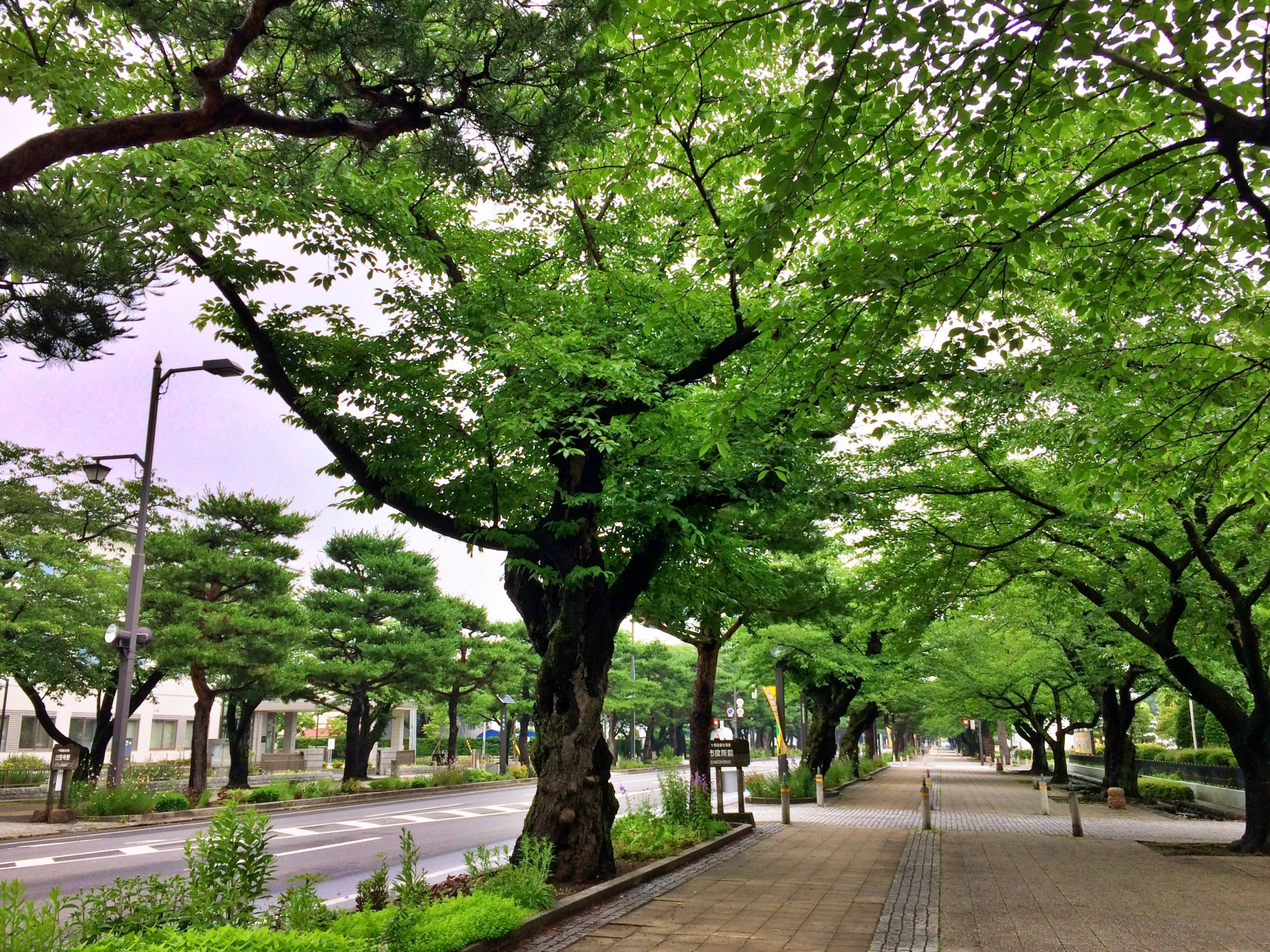
Kanchogai Street, Towada City’s symbolic thoroughfare, is a beautifully planned avenue set within a neatly gridded cityscape. Once home to the former Imperial Army’s horse-breeding division, the area was redeveloped after World War II into a hub for national, prefectural, and municipal government offices. Alongside cities like Kumamoto and Marugame, it is one of the few districts in Japan officially designated for government facilities under the City Planning Act.
Stretching 1.1 kilometers long and 36 meters wide, the street is lined with 161 pine trees and 155 cherry trees in four symmetrical rows, creating a striking landscape that transforms with the seasons—from cherry blossoms in spring to dazzling illuminations in winter. Along the sidewalks, streams inspired by Oirase Gorge and Inao River flow gently, accompanied by various horse-themed sculptures, giving the street the atmosphere of an open-air gallery.
Beloved by locals for strolls, festivals, and community events, Kanchogai Street was selected as one of the “100 Best Roads in Japan” by the Ministry of Construction in 1986 and later named to the “Preliminary 100 Selections of Beautiful Historical Landscapes of Japan” in 2007. It remains a cultural and aesthetic highlight of Towada City.
Oirase Gorge 奥入瀬渓流
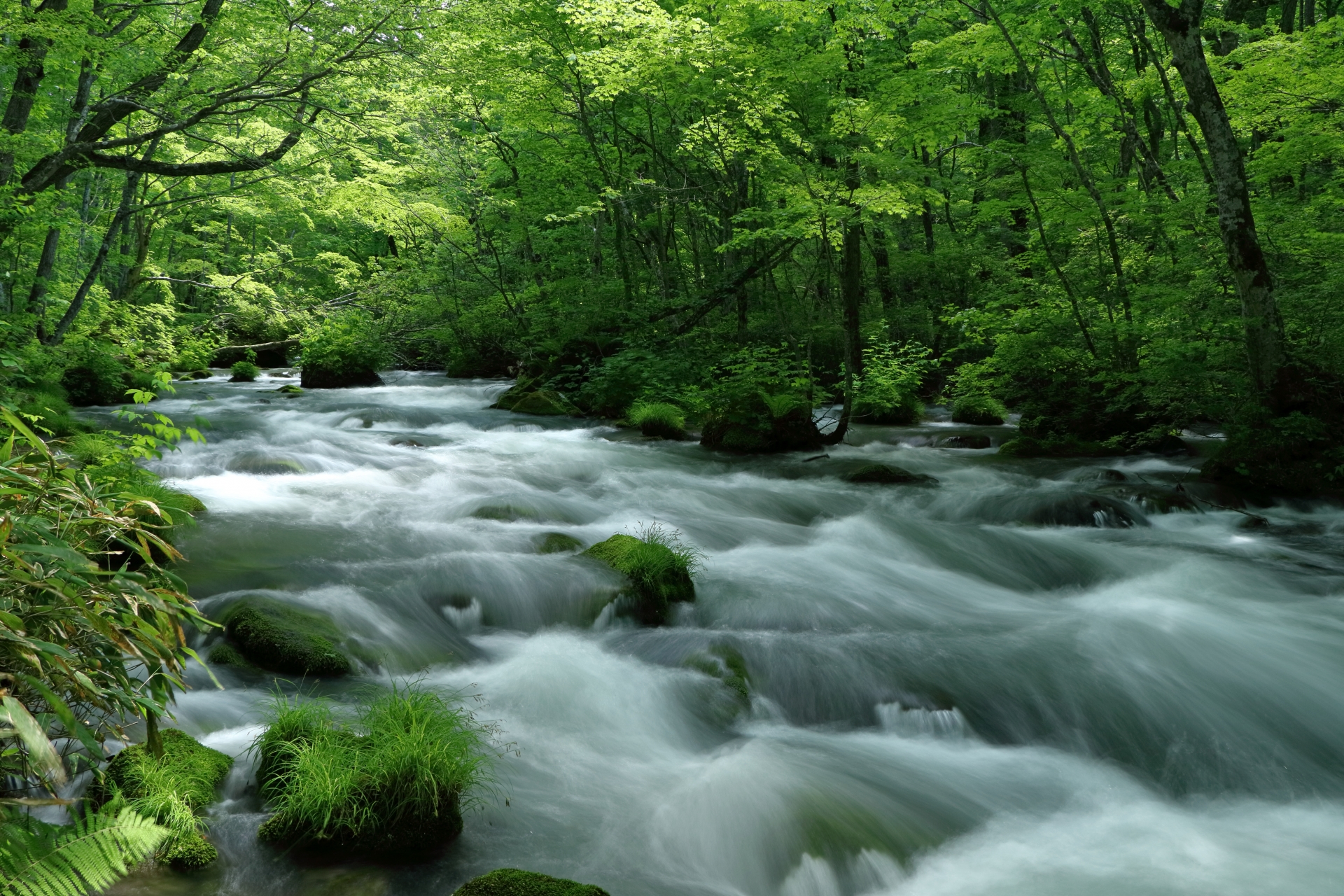
One of Aomori Prefecture’s most iconic scenic spots, Oirase Gorge is a captivating mountain stream that flows from the serene waters of Lake Towada. Stretching approximately 14 kilometers from Nenokuchi to Yakeyama, it is the only outlet river from Lake Towada and part of the Towada-Hachimantai National Park. The gorge enchants visitors year-round with its dynamic flow, cascading waterfalls, and lush forest surroundings.
A well-maintained walking trail runs along the stream, offering a roughly 4.5-hour trek through ever-changing natural beauty. The landscape is dotted with striking features like moss-covered rocks, sheer cliffs, and dozens of waterfalls, each with its own charm. Highlights include the powerful Ashura-no-Nagare, named after the fierce god Ashura for its dramatic rush of water crashing over large boulders, and Kumoi Falls, a three-tiered waterfall plunging from 20 meters high with overwhelming force. Shiraito Falls offers a delicate contrast, with streams of water cascading like silken threads—turning into a magical frozen cascade in winter.
Designated a natural monument in 1928, Oirase Gorge is especially stunning during the seasons of fresh green leaves and vibrant autumn foliage, making it an essential stop for any visit to the Lake Towada area.
